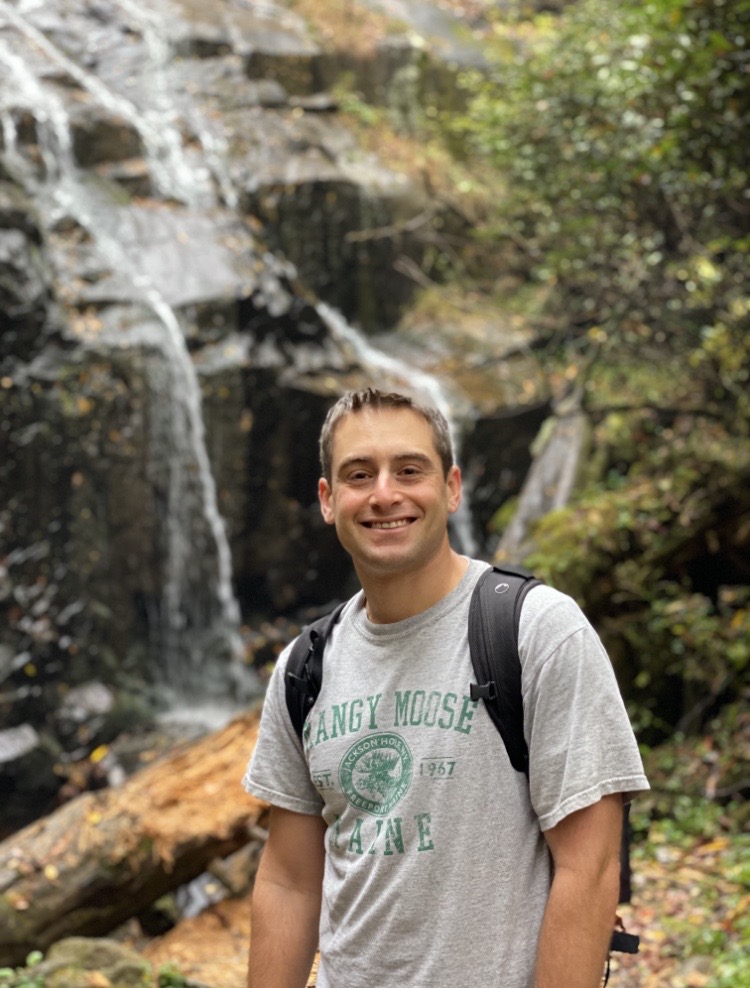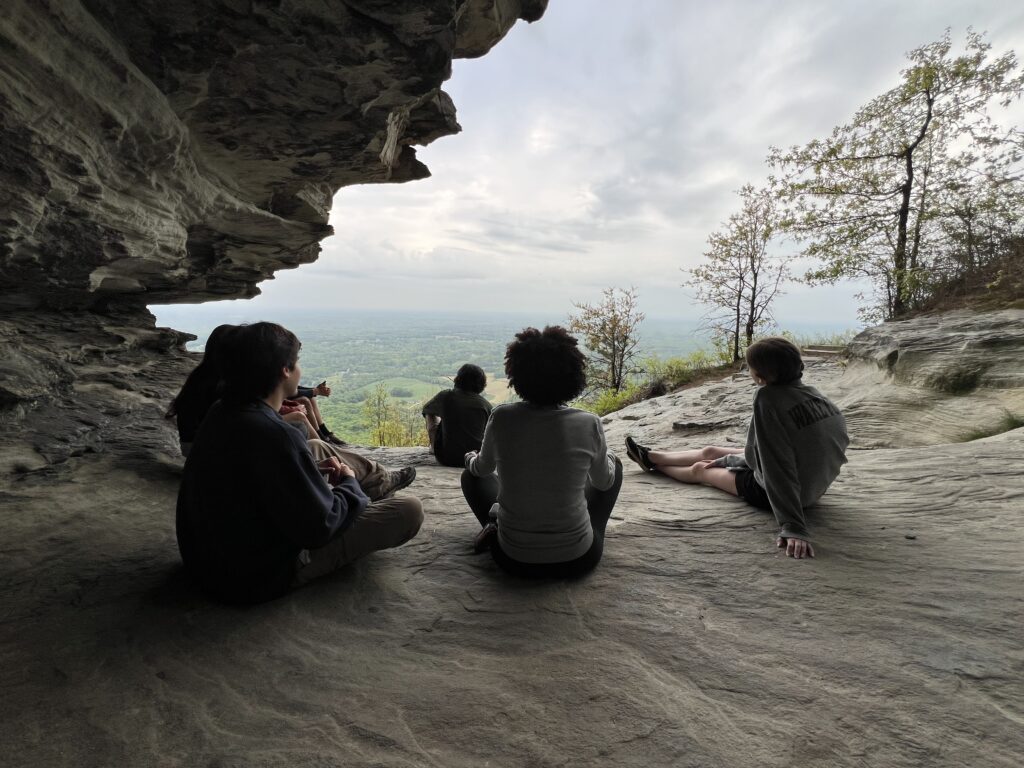Perspectives on Sustainability, Quarterly Newsletter
Forty-two. It’s the answer to the ultimate question of life, the universe, and everything. The only number retired by all of Major League Baseball, in honor of Jackie Robinson. The number of kilometers in a marathon, imperial units be damned. The number of isomorphism classes of all simple and oriented directed graphs on four vertices. (I don’t know what that means either, but it’s on Wikipedia so it must be important.)
Forty-two. It’s also representative of a quest I’ve been on for the past half decade: to visit — and hike at least a mile in — each of North Carolina’s 42* state parks. Why? Well, for starters, visiting all 63 US national parks started to seem a bit out of reach once I remembered how big Alaska is. But also because there’s something inherently special about exploration, discovery, and losing oneself in nature.

Nature has always been fascinating to me, has always drawn me in. From a love of animals that led me to declare in fifth grade that I would never eat meat again (28 years and counting), to “nature walks” with my grandparents in their neighborhood, to short hikes with my dad in the woods across the street from our house, it’s hard to remember a time when I didn’t feel that connection, a connection that has only grown stronger over the years. There’s always something new to be discovered around every bend, whether it’s a sweeping vista of a verdant valley or a furry caterpillar inching its way along a fallen autumn leaf. I’ve never had a reason why nature makes me feel the way that it does, but it wasn’t something I ever questioned.
Why Get Outside?
Well, it turns out there’s a reason after all. The American Psychological Association cites time in nature as being linked to lower stress, better mood, increased attention, and even reduced risk of psychiatric disorders. Researchers have shown how physiological responses to nature exposure — lower blood pressure, reduced stress hormone levels, and enhanced immune system function — can not only lower anxiety and feelings of isolation, but actually speed the rate of healing. A 2022 article in the Journal of Global Health assessed dozens of previous studies and found that 98% showed an improvement in mental health outcomes with increased time in natural environments, while 83% explicitly cited improved physical health outcomes such as better sleep and reduced risk of chronic disease.
Nature provides us with an opportunity to do something that’s becoming increasingly difficult these days: escape from our always-on, screen-time-driven, overstimulated society. Nature stimulates us too, but in a way that’s vastly different; it encompasses all of our senses and comes without a timetable.
Thankfully, our society is starting to take notice. Nature-based therapy, including practices like forest bathing that have long been commonplace in non-Western traditions, is receiving increased attention from mental health practitioners.
“Incorporating nature into my therapy work is really important to me,” says Dr. Katherine Whitley, Staff Psychologist and Outreach Coordinator with the Wake Forest University Counseling Center. “Nature plays a huge role in my own mental and physical health and I have seen it be a means for connection with others, a safe space for self-reflection, and a source of joy and creativity that keeps me centered during times of stress.”
Photos of 40 of the 42* North Carolina State Parks, all captured by Brian Cohen.
Accessing the Outdoors
Whitley encourages students to include a connection to nature in their coping skills toolbox, whether that means going for walks, journaling, or simply increasing their interaction with plants. “Our living environments can be somewhat devoid of nature, so trying out being a plant parent or volunteering at the Campus Garden when we can’t have our own plants are ways to connect with our nurturing side and get our hands dirty.”
Unfortunately, such access to nature is not universal and is too often dependent on socioeconomic status and racial identity. At this year’s Earth Talks, Ashlyn Segler (‘24) presented her research showing a strong correlation between marginalized, formerly redlined communities and lack of tree cover. And the lack of access to parks and open green spaces among such communities is well documented.
The good news is that nonprofit organizations like the Trust for Public Land and their 10-Minute Walk Program exist solely to protect land, create parks, and increase accessibility to the outdoors. National Park Trust has a similar mission while also physically connecting to nature thousands of kids who might not otherwise have the opportunity.
“We engage students from underserved elementary and middle schools nationwide with the great outdoors through our Buddy Bison School Program,” says Grace Lee, executive director of the organization. “The parks become their outdoor classrooms for science and history, where they can also take advantage of the health benefits of being in nature and learn about park stewardship.”
Creating Connections
It is this connection to nature that also helps us connect with one other. 1000 Hours Outside, a global movement focused on getting kids away from their screens and into the great outdoors, also aims to reconnect families in the process. And at Wake Forest, the concept plays out in no uncertain terms through Outdoor Pursuits, whose leaders “share a mutual passion for the natural world and its ability to bring people together and build community.”
Put simply, nature is a powerful entity that is life-enriching for some and life-changing for others.

Embracing the Journey
So where does this leave us? We can all work together to help protect and preserve natural spaces and to pursue equitable access. We can find unique ways to bring nature into the lives of those around us. We can encourage one another to unplug from daily life and plug into the natural world. But we can’t do any of this if we’re pouring from an empty cup.
My advice to you is simple. Get out there and be curious. Connect with the only planet we have. Find peace, solace, and fulfillment. It doesn’t matter if your quest is as ambitious as conquering the Seven Summits or as simple as growing your first tomato plant in a pot on your balcony. Set a target and pursue it, and if you never reach that target, so be it. The goal is merely an excuse to experience what really matters: the journey.
So where am I on my journey? Well, I had planned to write these final paragraphs from outside a tent on the undeveloped Bear Island, part of Hammocks Beach, which would have been my 42nd and final North Carolina state park. I would have told you how I was sitting by the dunes, staring off into the vast Atlantic Ocean, my emotions caught between a sense of triumph and a sense of loss, and pondering where my next journey would take me. I would have proudly featured a photo of myself, smiling in accomplishment and holding a piece of paper with “42” written in thick black ink.
But as is sometimes the case, life had other plans. The temporary closure of the island through at least the end of summer may have provided a frustratingly anticlimactic end to this story, but it prolongs my own. In the meantime, I’ll be comforted knowing there are thousands of other places for me to explore, trails to hike, species to appreciate. And I’ll cope with my disappointment the best way I know how: by finding myself in nature.
*NC Division of Parks and Recreation’s website lists 42 state parks that are currently operational and open to the public. Two additional parks — Pisgah View, slated to open in 2025, and Bob’s Creek State Natural Area, which does not currently have a timetable for public access according to Park Superintendent Matt Haynes — will eventually bring the total to 44.
References
Jordan, C. (Ed.). (2022, December). Inequitable access to nature — Awareness and action. Children & Nature Network Research Digest.
Nejade RM, Grace D, Bowman LR. What is the impact of nature on human health? A scoping review of the literature. J Glob Health. 2022 Dec 16;12:04099. doi: 10.7189/jogh.12.04099. PMID: 36520498; PMCID: PMC9754067.
Robbins, J. (2020, January 9). Ecopsychology: How immersion in nature benefits your health. Yale Environment 360.
Time spent in nature can boost physical and mental well-being. Harvard T.H. Chan School of Public Health. (2024, January 2).
Weir, K. American Psychological Association. (2020, April 1). Nurtured by nature. Monitor on Psychology, 51(3).
